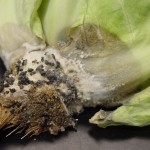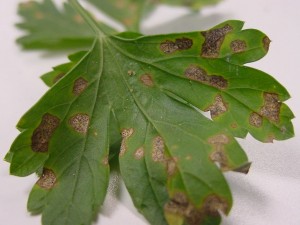With the wet spring we’ve had thus far, it’s easy to see the potential for Pythium and Phytophthora problems to develop once transplanting begins.
Unlike in the past, there currently are a number of good options for early season control of these pathogens, it just takes a little bit more planning ahead of time.
Options for pre-transplant applications include a Ranman (cyazofamid, 21) drench one week before transplanting for Pythium in tomatoes; as well as Previcur Flex (propamocarb HCL, 28) for the suppression of Pythium and Phytopthora in tomatoes and peppers. Phosphite fungicides, such as ProPhyt, Rampart, and K-Phite (FRAC code 33) can also be applied as a pre-transplant drench in the greenhouse on many crops. [Read more…]


